
Right off the bat I'm struck by how painterly this image is up close.
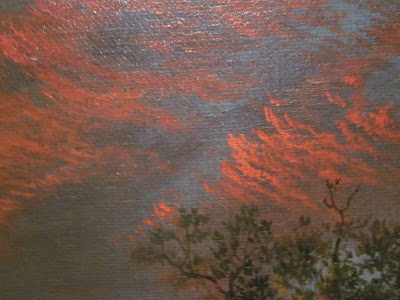
I think images of paintings with glare on them can be helpful because it shows the thickness of the paint and the texture of the substrate. Although most paintings on canvas in museums are "lined", that is, the canvas is glued to another piece of material (such as canvas, linen or even vinyl and aluminum) and this process (which includes heat) tends to flatten paintings out somewhat, I can't help but notice that most paintings in museums are painted very thinly.
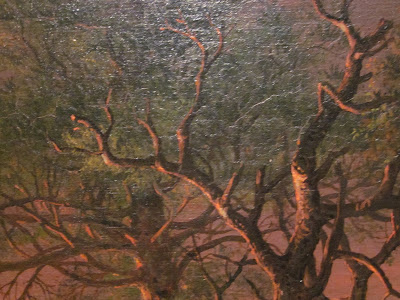
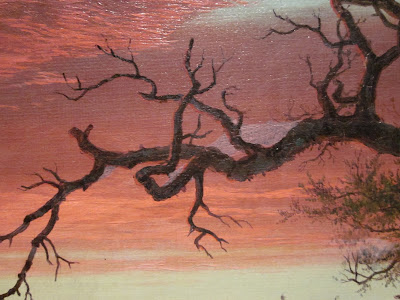
To me, this image is particularly interesting because it shows the areas where Church altered the painting. The light purplish areas show the original location of the tree branches and I am guessing that the paint that was used to cover those shapes has changed color due to some chemical process, thereby revealing the alterations. As an artist, I love seeing the ways artist's altered their work because it indicates their values--their decision that one state was better than another.
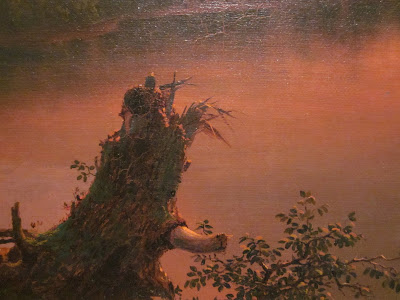
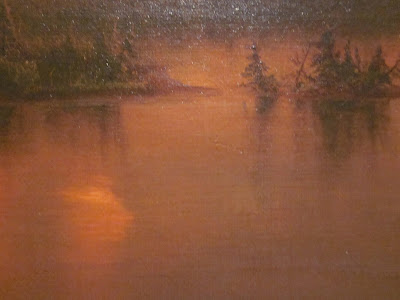

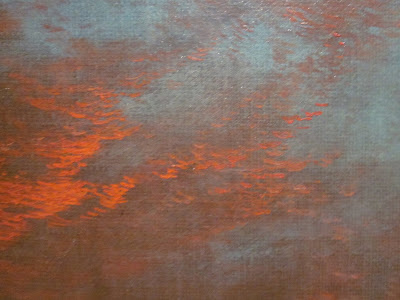
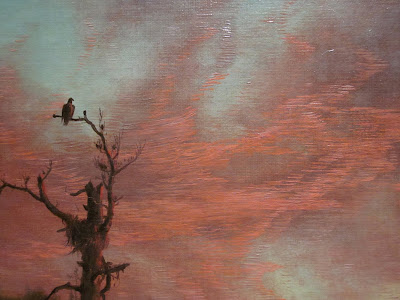
I'm pretty sure Church worked "back to front" rigorously. By that I mean the most distant objects were painted first and nearer objects were painted on top of them. This is a habit I need to acquire personally.


Thanks for sharing! Those light purplish areas are really interesting.
ReplyDelete